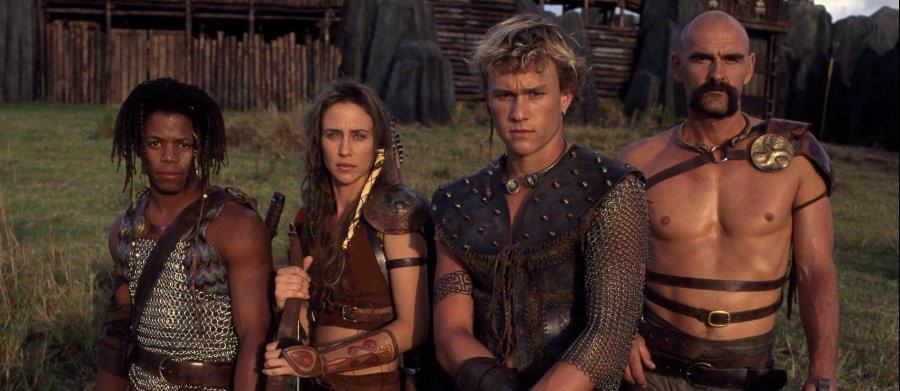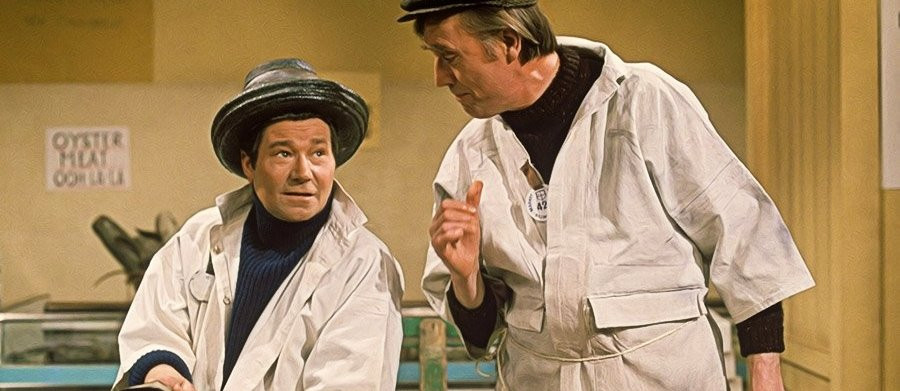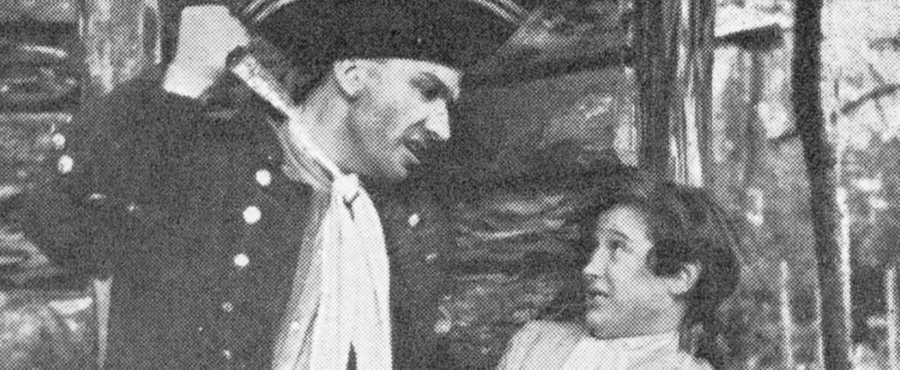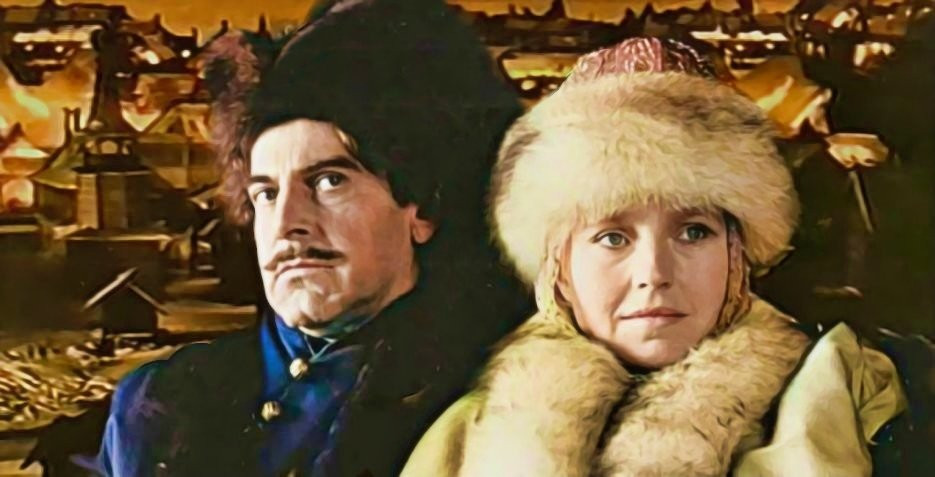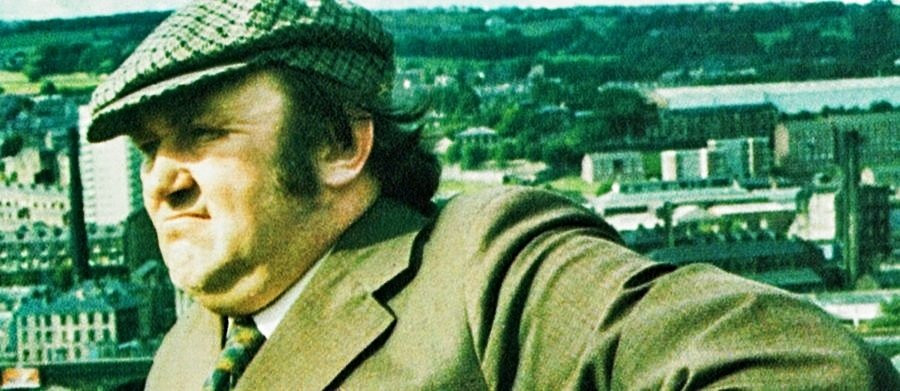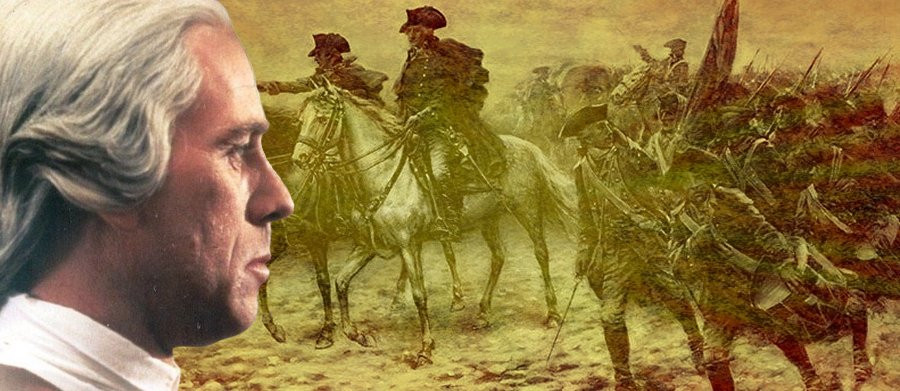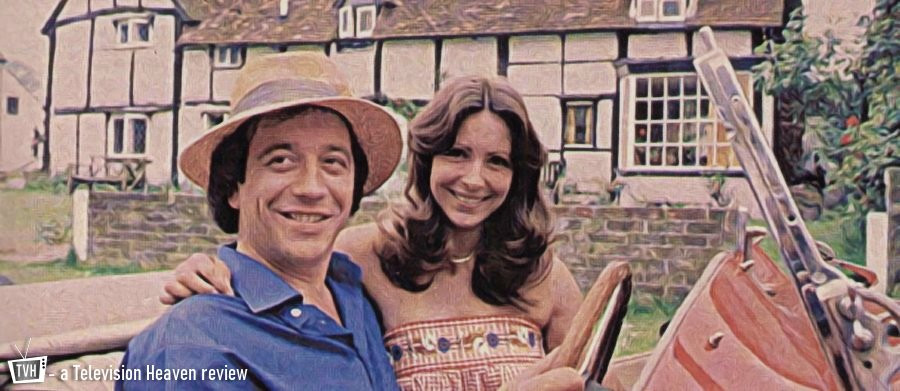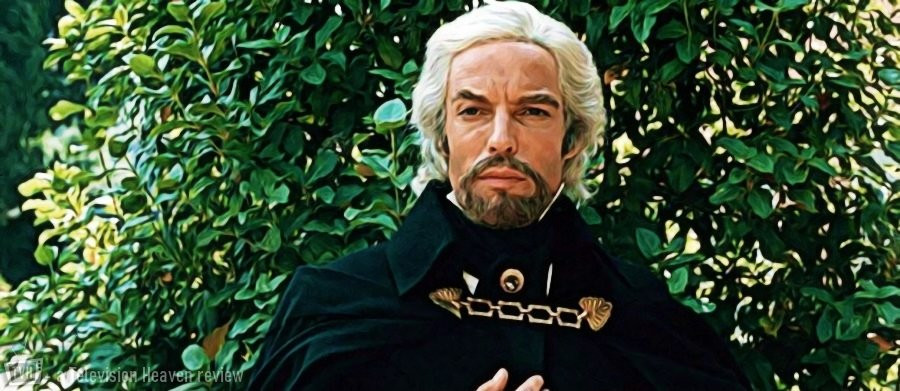
The Count of Monte Cristo (1975 TV Movie)
1975 - Italy UkAlexandre Dumas pere tapped into something fundamental when he wrote 'The Count of Monte Cristo.' We fantasise about what we do not have, and most people in the modern world are frustrated on a daily basis by their powerlessness and by simple problems that could be solved very easily by a large pile of surplus cash. Dumas presents the ultimate wish fulfilment, a protagonist, Edmond Dantès, who goes very suddenly from one end of the wealth and power spectrum to the other. However, this is a man who seeks not luxury - which he gets anyway - but justice for the wrongs done to him.
Even those who have never been imprisoned in the Chateau d'If have probably at some point been at the mercy of an arrogant boss or an unsympathetic bank manager or an officious bureaucrat they would love to have in their power in their turn. Better still would be to be able to exercise that power surreptitiously, playing with a victim who has no idea what is happening. That is what Dumas offers us and it is a heady brew.
There is a theory that the novel represents Dumas' own revenge fantasy. His own father, the tall, handsome son of a black slavewoman and her noble French owner, rose rapidly to the rank of General after the French Revolution, only to be sidelined by Napoleon before dying in relative poverty and obscurity - there is a great story there in its own right. However, the revenge theory is rather undermined by the fact that Napoleon, who is mentioned in The Count of Monte Cristo as the unseen instigator of events, is treated with no particular hostility by Dumas.

Edmond is the innocent bearer of a compromising letter from the exiled Napoleon. Framed by a cabal of secret enemies, he is sent to the nightmarish Chateau d'If by a bureaucrat whose motivation is entirely selfish. There he befriends a fellow prisoner, the Abbe Faria, a scholarly priest who tells him about the lost treasure of Monte Cristo. Escaping after Faria's death, Edmond secures the treasure, which he uses to recreate himself as the glamourous Count of Monte Cristo and to fund a very elaborate plot for the total destruction of his enemies. Simply killing them is not enough: he wants to strip them of everything they value.
This basic story is so powerful that it has often been adapted for film and television, sometimes in a different setting, as in the recent American series Revenge, which updated it to modern times and made the protagonist a woman.
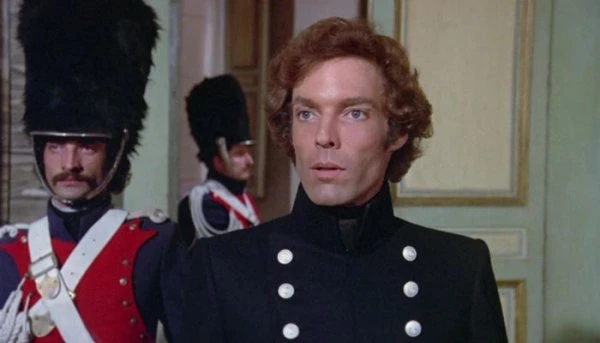
Among more traditional adaptations, the 1975 "television movie" starring Richard Chamberlain stands the test of time very well, and still bears comparison with the splendid 2002 feature film starring Jim Caviezel, which is now probably the definitive version.
Chamberlain was far from obvious casting at the time. He was identified too strongly with his role in Doctor Kildare and his status as a "soap opera" star undermined his professional credibility. However, he had recently begun a successful career pivot when he was cast as Aramis in Richard Lester's hugely entertaining feature film of another Dumas classic, The Three Musketeers. His work in The Count of Monte Cristo cemented his position in the historical adventure genre and proved he could handle leading roles in it. Indeed, he became something of an acknowledged expert, going on to star in adaptations of Dumas' The Man in the Iron Mask, Sir Henry Rider Haggard's King Solomon's Mines, and James Clavell's Shogun.
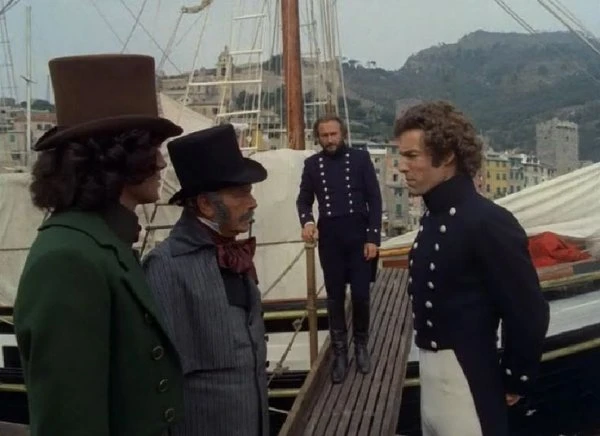
The role of Edmond Dantes presents a considerable technical challenge to an actor. It demands in effect three separate performances: the eager young seaman of good prospects within his humble station in life; the embittered prisoner; and the mysterious, sophisticated, apparently all powerful Count. There has to be sufficient differentiation for the Count to be unrecognisable to other characters who knew him as the young seaman, but at the same time the viewer has to see a clear continuum over the course of the character's development.
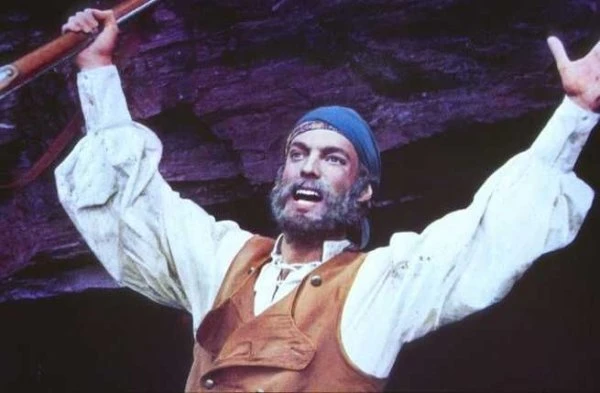
Chamberlain meets all these challenges with panache. Indeed, it seems that he was much better than even the producers expected. An initial nervousness at having Doctor Kildare in their leading role may be deduced from their decision to back him with a very strong supporting cast. Although their caution proved superfluous, the presence of some distinguished names added class to the production, and Chamberlain gilded his triumph by showing how he could hold his own against them.
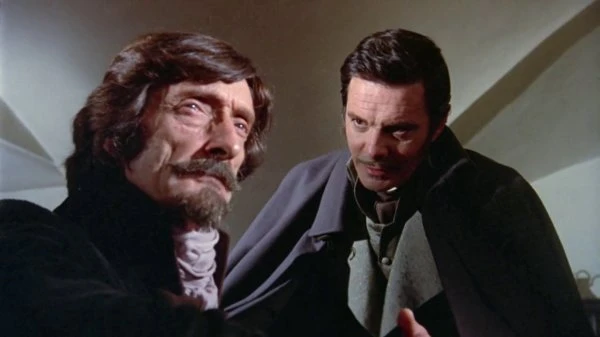
Trevor Howard is the Abbe Faria. Louis Jourdan, who had himself played Edmond in an earlier French version of the story, is the scheming bureaucrat who would rather imprison a man he knows is guiltless than endanger his own career.

Tony Curtis is Edmond's rival in love and Kate Nelligan the object of their mutual affection. Dominic Guard and Taryn Power, Tyrone's daughter, are likeable young people who must pay the price for their parents' sins.

Best of all is Donald Pleasence as Baron Danglars, a wealthy banker to whose early career Edmond was once a minor obstacle, or in retrospect no more than an irritant - but that was enough to provoke him to frame Edmond and ruin his life.
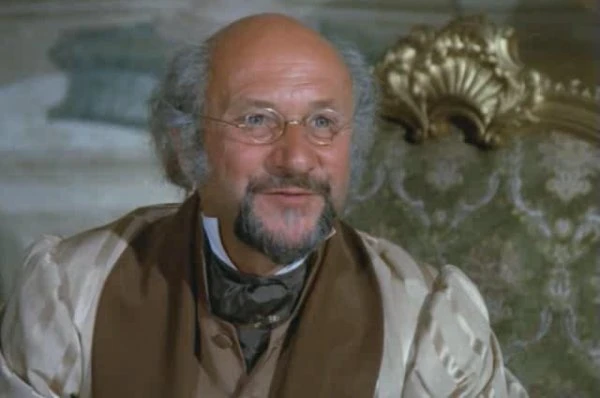
The first scene in which Danglars meets Edmond in his new persona as the Count is a masterclass in acting, directing, writing, editing, and scoring. From the moment the Count tosses his cloak thoughtlessly to a lackey through his brisk ordering of his considerable financial affairs to his casual identification of one of Danglars' prized antiques as a fake, he is in complete command, and the wealthy Baron is reduced to little more than a lackey himself. It takes only a couple of minutes to establish the Count as a completely new character, one who has, apparently, absolutely nothing in common with either the young seaman or the prisoner Edmond was before.
The Count is therefore the fulfilment of another fantasy, one that is perhaps more common but harder to achieve than the fantasy of immeasurable wealth and power - the fantasy of becoming a completely different person, superior in every respect to who one actually is.
The "television movie" was produced by Lord Grade's ITC, which had also, almost twenty years before, produced a television series based on supposed "further adventures" of the Count not mentioned by Dumas. Perhaps some residual sympathy for the subject matter remained within the organisation because there seems to have been a real commitment to the production which comes across on screen.

There is a breadth to the cinematography that is almost cinematic. Locations are well used. We have a fine sense of the Mediterranean Sea and sky. We also have a fine sense of period. The costumes, props, and set dressings seem faultless. The opening shots thrust us into Early Nineteenth Century France and we remain there without question for the rest of the running time. It is only when one looks at it all again with a more practised eye that one realises that it is not quite as epic as it first appeared. Things like the limited number of extras suggest television budgets not feature film money. However, the fact that one has to look twice to see that demonstrates how there are real professionals at work.
Even they cannot avoid the difficulty of pacing inherent in the book. After setting everything up neatly in the first few minutes, representing only a few hours, the rhythm of the drama has to change abruptly to represent long years of soul crushing imprisonment in the Chateau d'If. This is handled well but then has to followed by another abrupt transition as Edmond becomes the Count and sets his plot in motion in the third act. This might itself be divided into two parts. The first is the best part of the film as we get a vicarious thrill from the power and the ingenuity of the Count. However, the second part, the big pay off to which we have been building and looking forward with growing anticipation, turns out to be rather contrived and perfunctory.
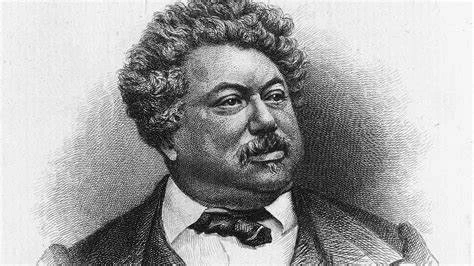
The same weakness can be found in the original novel. To explain... Dumas was an extraordinarily successful and prolific author - successful in part because he was prolific and prolific in part because he was successful. His story does indeed resemble Monte Cristo's in one respect: he went from great poverty to great wealth - but, unlike Monte Cristo, there was absolutely nothing mysterious about his wealth or the frank enjoyment he derived from spending it all, and then some. The proceeds of the hugely profitable novel financed the building of a Chateau of the outskirts of Paris which Dumas named after Monte Cristo. Confirming his personal association with his protagonist, he called his writing studio there the Chateau d'If. Alas, his expenditure was so lavish that he was forced to sell the Chateau de Monte-Cristo soon after its completion. At least part of that expenditure also went on hiring a small army of less famous writers to work on all the books and articles he contracted to write.
It should be stressed that Dumas possessed a ferocious work ethic, and always wrote a great deal himself, but no one could have written everything to which he lent his celebrity name. It seems he gave his subcontracted writers outlines of at least some of his work and let them get on with the actual scribbling. In later life, he read or - give him the benefit of the doubt - reread The Count of Monte Cristo and is quoted as saying he remembered writing the first chapters but not the later ones. This is all too believable because there is a definite decline in quality towards the end. The "big reveal" scene in particular is painfully bad and cannot be Dumas.

The story of the "television movie" follows the novel relatively closely, which is usually a wise strategy but in this case left it with little on which to build towards the end. In spite of that, it remains a very good story, very well told, and a good example of how family friendly adventure should be done. The present generation of producers and writers would benefit from studying it carefully. One does not need to be "edgy" or "ironic": just give us characters to whom we can relate and put them in unusual situations that make us wonder what we would do in their place. Is that really so hard?
Review: John Winterson Richards
John Winterson Richards is the author of the 'Xenophobe's Guide to the Welsh' and the 'Bluffer's Guide to Small Business,' both of which have been reprinted more than twenty times in English and translated into several other languages. He was editor of the latest Bluffer's Guide to Management and, as a freelance writer, has had over 500 commissioned articles published.
He is also the author of ‘How to Build Your Own Pyramid: A Practical Guide to Organisational Structures' and co-author of 'The Context of Christ: the History and Politics of Rome and Judea, 100 BC - 33 AD,' as well as the author of several novels under the name Charles Cromwell, all of which can be downloaded from Amazon. John has also written over 100 reviews for Television Heaven.
John's Website can be found here: John Winterson Richards
You may also like:
Seen this show? How do you rate it?
Seen this show? How do you rate it?
Published on September 27th, 2021. Written by John Winterson Richards for Television Heaven.


